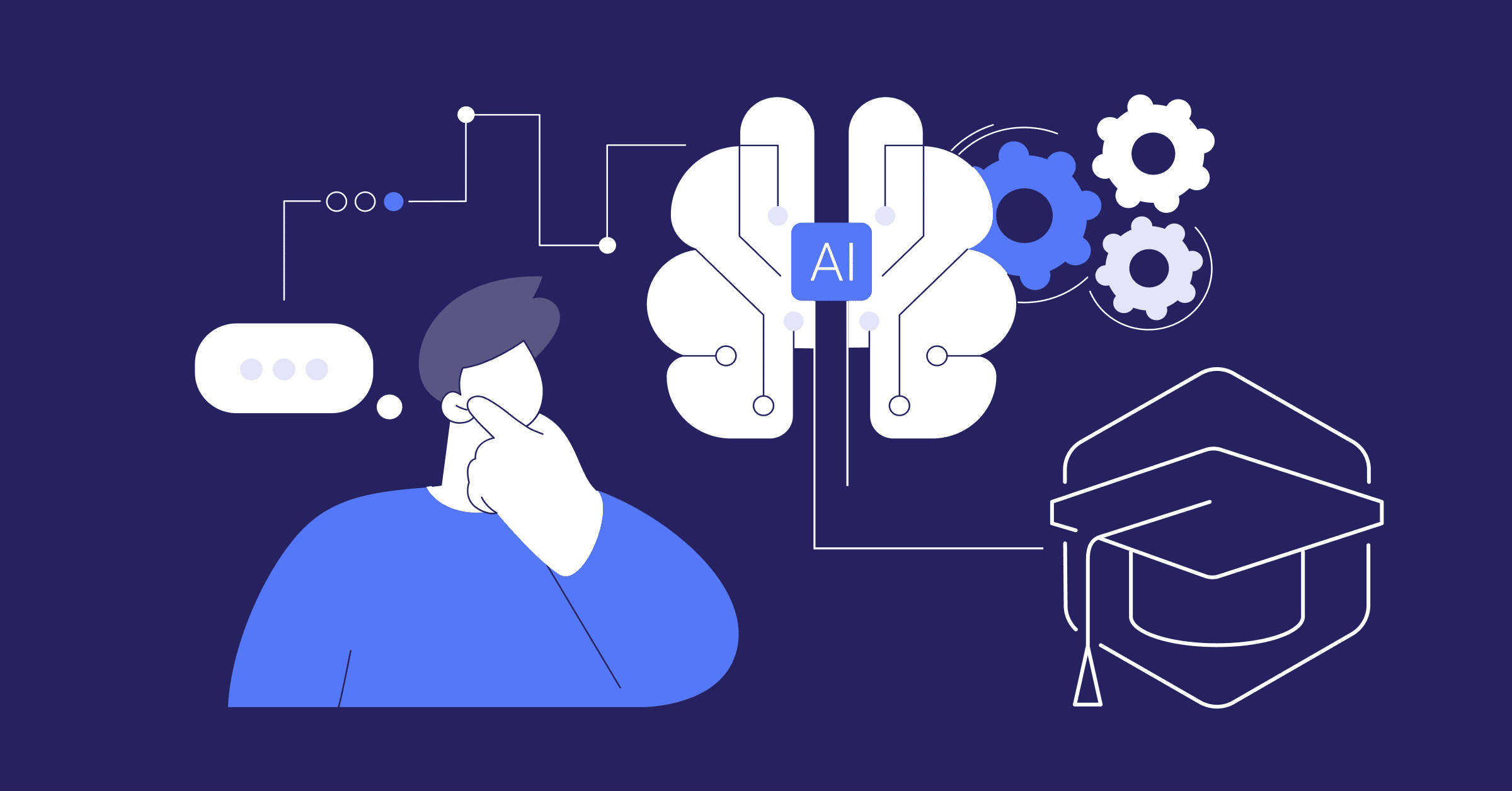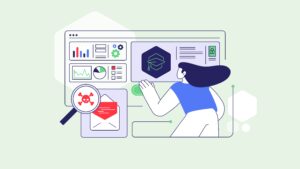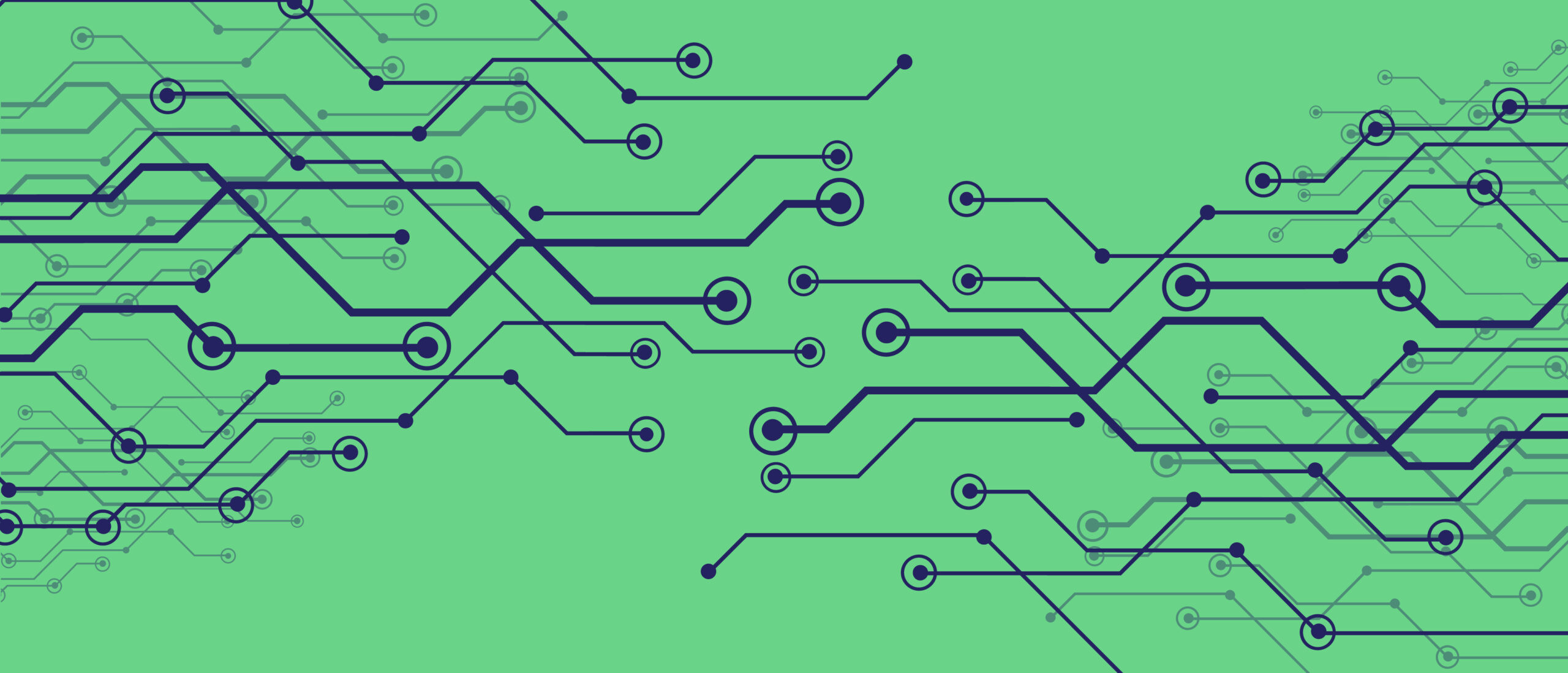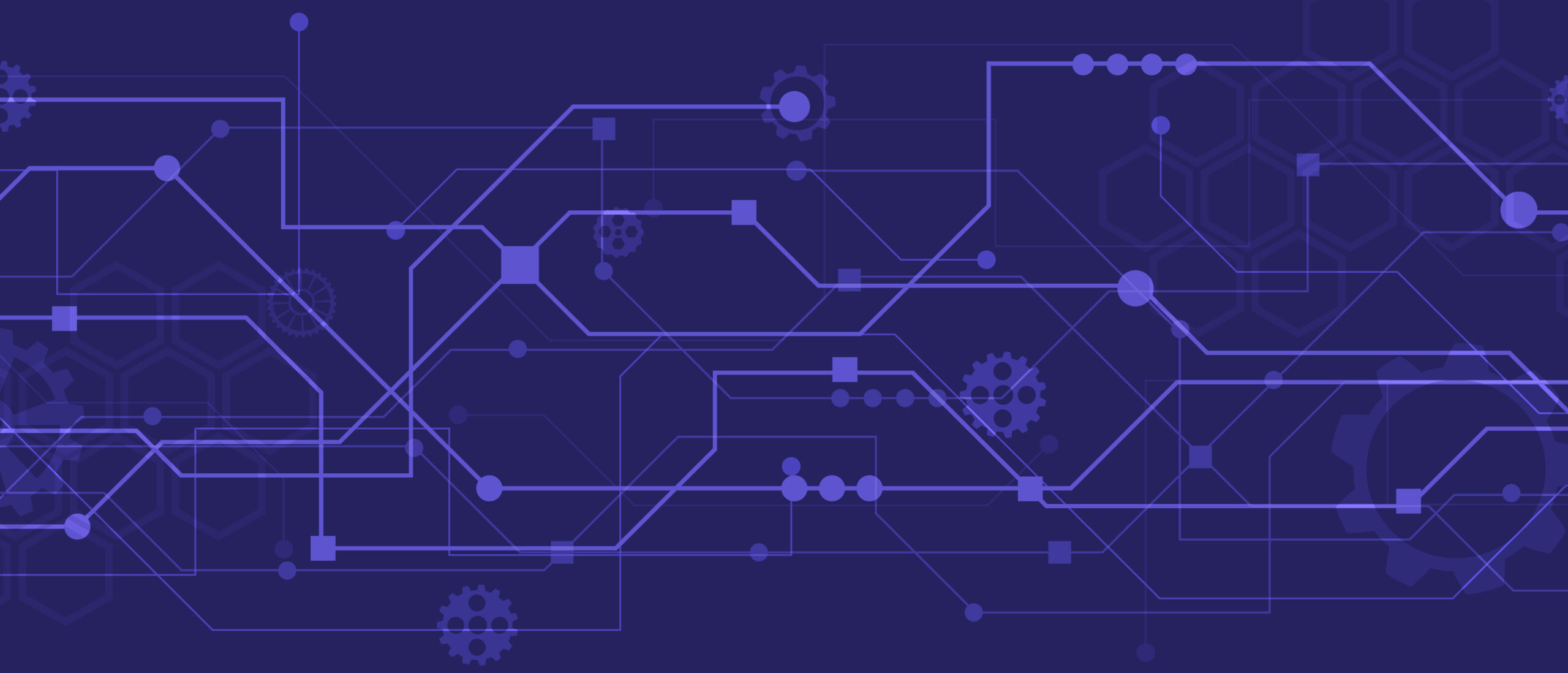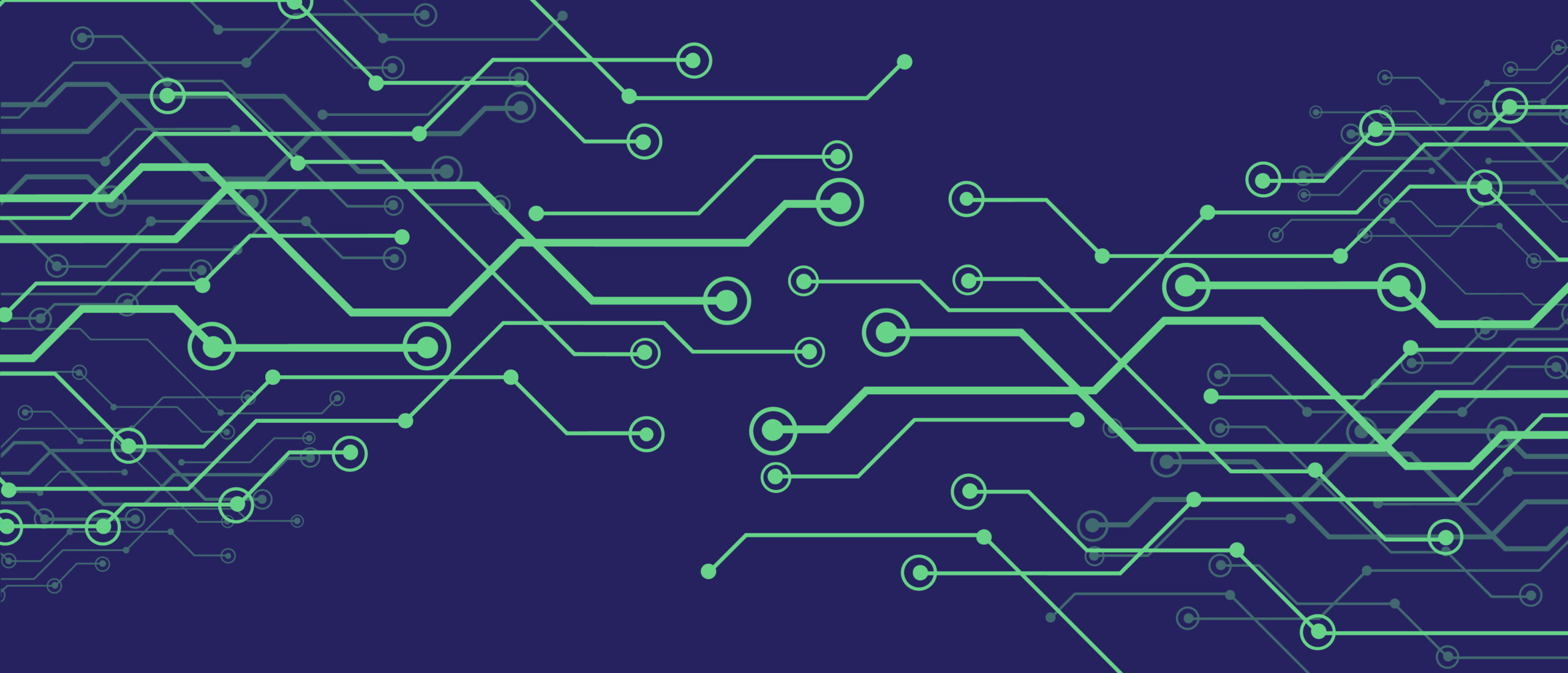In the US, K-12 school systems are struggling to keep their IT environments safe as cyber threats increase. Schools often lack the necessary resources to defend themselves, and even those with dedicated IT staff and cybersecurity systems are either overextended or not skilled enough to address vulnerabilities. In many cases, tools are outdated, and solutions are too siloed to effectively protect their networks.
Cybercriminals are not unaware of this. In fact, they will actively try to identify and exploit weaknesses in their security systems using sophisticated stealth techniques that are difficult to detect, even with a full IT staff.
However, artificial intelligence can help schools detect threats quickly and respond effectively than traditional security methods, even with limited resources. By automating complicated tasks, predicting the likelihood of threats, and even spotting anomalies and unusual behavior faster, AI and machine learning can offer a strong defense alongside human analysts. It’s not all upsides though, and we’ll explore some drawbacks of using AI as well. First though, we’ll get into the potential benefits.
AI’s different applications in education
AI has the ability to collect and analyze vast quantities of data in real time. In cybersecurity, this means that AI can detect and respond to threats far faster than humans, keeping your systems one step ahead of attackers.
Automated incident response
The faster you can respond to an attack, the better. AI can quickly and automatically identify, analyze, and mitigate security incidents of varying degrees of severity. It can also recommend the best response and even take predefined steps to limit the damage. This keeps the impact of a cyber incident down to the bare minimum and reduces the number of human resources available to operate.
Predictive analytics
The average K-12 IT administrator has enough on his or her plate without tracking every emerging cybersecurity threat or hacker group. Even large corporations have a hard time staying updated with evolving trends, technologies, and threats.
AI, on the other hand, doesn’t have any limitations in that regard. AI can continuously monitor the global threat landscape, provide real-time updates, take actions based on threats as they emerge, and make sure that your cybersecurity program stays ready to take relevant action. It can also analyze historical data to look for patterns and unusual behavior and predict which threats may emerge in the future.
Reducing false positives
In cybersecurity, false positives occur when a security tool or system incorrectly identifies a benign activity, file, or event as malicious. This means an alert is triggered, suggesting a threat is present when there actually isn’t one. This may seem like a harmless error, but false positives can take up a significant amount of time, and even detract IT personnel from dealing with very real threats. AI is precise enough to identify and reduce false positive alerts.
Improving decision making
AI can quickly provide the answers your IT team is looking for because it can process much more data than a human analyst can. This means more information at your fingertips, which means you can make more meaningful decisions and respond faster to threats and actions.
Behavioral analytics
If your school or college is using a legacy system that takes a rule-based approach to cybersecurity, odds are you are going to have a harder time spotting some of the more sophisticated threats out there. AI uses behavioral analytics to determine how your systems and users should behave so that it can detect deviations from the norm and unusual behavior far more quickly.
Endpoint security reinforcement
As higher education institutions grapple with the diverse array of devices connected to their networks, securing endpoints becomes paramount. AI-powered endpoint security solutions excel in detecting and responding to malicious activities on devices connected to the network. These solutions utilize machine learning algorithms to recognize patterns indicative of malware or unauthorized access, offering real-time protection across a multitude of devices, including computers, smartphones, and IoT devices.
Risk mitigation
AI-powered security systems also simplify risk management. It can take action automatically when a threat is detected (e.g., blocking a malicious IP address), expedite the threat analysis process from beginning to end, and help schools and colleges to better assess their general risk landscape and the mitigation efforts they need to take, based on the likelihood of a specific threat or attack being carried out against them.
Adaptive security
It’s always better to be proactive instead of reactive when it comes to cybersecurity. But as soon as you think you’ve arrived, threat actors move the goalposts. Machine learning and AI can adjust security measures whenever a new threat comes to light.
For example, you may be reliant on traditional access control measures that use a set of static rules to grant users access to information or systems. AI, on the other hand, can take a dynamic approach to user permissions based on risk factors and real-time behavior, reducing your risks.
Vulnerability management
AI systems can continuously scan your network, looking for vulnerabilities and setting priorities for patching and scanning. By automating these processes, schools can quickly address any confirmed vulnerabilities, which blocks cybercriminals from launching things like zero day attacks.
Training and awareness
AI will gather information about your system and vulnerabilities, as well as user interactions and unique security risks. This information can be used to create targeted training materials to educate students, staff, vendors, and other stakeholders about best practices based on their behaviors. Remember: human error is often the biggest cybersecurity risk in an organization. Training and increased security awareness can be your first and best defense against emerging threats.
A third of internet users in the education sector have, at some point, fallen victim to phishing scams. Phishing is a common cybercrime where attackers try to trick you into revealing sensitive information or clicking on malicious links. They do this by masquerading as a trusted source, such as a bank, credit card company, or even a friend or colleague. This can give criminals all the leverage they need to access your network and steal valuable information.
AI models will analyze email content, patterns, and even sender behavior so that they can identify and block attempted phishing attacks. It can also enhance your existing user authentication processes by studying login information, device traits, user traits, and other behaviors to spot anomalies and unauthorized access attempts.
Challenges and concerns
So far, we’ve said a lot of glowing things about AI as it relates to cybersecurity in this article. AI can enhance your cybersecurity efforts, but it’s not without its pitfalls and challenges.
Schools and colleges hold vast amounts of personal data, which AI and ML will collect and analyze. Balancing effective cybersecurity with data privacy requires careful oversight and transparency. It’s important to stay compliant when it comes to safeguarding student information.
Integrating with existing EdTech may also provide some challenges and require more expertise than schools can readily provide; you may need to leave integration and implementation up to a trusted cybersecurity advisor. It may also be an expensive exercise that can be challenging for schools that are already overstretched.
Don’t forget, too, that cybercriminals also have access to AI, and their attacks are expected to get more sophisticated, whether it be malware attempts or deepfakes.
But the promise of AI in making schools safer can’t be denied, even though the road ahead may be difficult. The use of careful oversight, strategic implementation, and ongoing adaptation could make AI more useful for schools in their fight against cyber threats, creating a better online learning space for everyone.
Looking ahead
Using AI for security in education is a big step towards protecting K–12 schools and colleges from new cyber dangers. AI can help strengthen defenses in many ways, such as by automating incident reactions, spotting new risks, lowering false positives, and improving endpoint security. Its ability to provide adaptive security and control vulnerabilities also makes it possible to be proactive in protecting against possible breaches.
But along with AI’s benefits come problems—like making sure that data privacy rules are followed and figuring out how to connect AI to current educational technology.
Even with these problems, the need to keep student information safe and keep operations running smoothly shows how important it is to use AI-driven protection solutions.
If you need help, get in touch with a cybersecurity expert who can help you make the most of AI and avoid its pitfalls.


